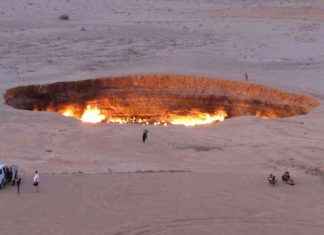Lucky us: Earth is the only solar system planet with the right conditions for life as we know it to emerge. Its size is one of them.
It would be much bigger than Jupiter and the atmosphere density would be too high to block sunlight from reaching its surface. This would make it a major source of energy for all living things. A smaller planet, such as Mars, wouldn’t exert enough gravitational attraction for it to maintain an atmosphere and a hydrosphere that would allow organisms to enrich in oxygen.
It is also important to consider the distance from the radiant star. Nearer, such as Venus, the surface temperature is so high that water, which is the medium in which metabolism takes place, would be gaseous. Further away, such Mars, it would still be low and icy.
Between 4.6 billion years ago (Ma), the time when the Earth formed, and approximately 4000 Ma, it was exposed to intense meteorite bombardment. The protoplanet Theia was also involved in collisions, which resulted in the birth of the Moon. This prevented the development of life in the Hadean Eon.
While the fossil record doesn’t indicate when the first organisms were discovered, some geochemical evidence suggests it was in the Archean (3,800 Ma). This is the age of the oldest sedimentary rocks known, the bands of iron and graphite that alternate with the flint from the Isua formation of Greenland. As in organic matter, this graphite does not contain the stable heavy carbon isotope (13C). Stromatolites are the most convincing evidence, biogenic structures that were formed from autotrophic Cyanobacteria and which show phototropism. They were recorded before 3,500 Ma.
The discovery of eukaryotic organisms continues during the Proterozoic. It is the Cambrian period (542 ma), which is already in the Phanerozoic when a good record is made of the evolution of life. Mineralized skeletal tissue appears, increasing the potential for fossilization.
Paleontology is a study of fossils from many perspectives to reconstruct the past. It deals with historical facts of a contingent and unrepeatable origin. Theodosius Dobzhansky, a geneticist, stated that biology is only meaningful when viewed in light of evolution.
Ernst Mayr, a zoologist, stated that we wouldn’t be able solve some evolutionary problems without paleontology. (Think of the great catastrophes such as that which decimated the dinosaurs following the Cretaceous meteorite impacts). It is paleontologists who, out of all biologists have access to the temporal dimensions of evolutionary phenomena.
These factors led George Gaylord Simpson, paleontologist, to conclude that fossil hunting “carries with it uncertainty and excitement of raising a creature never seen before by human eyes. It causes us to ponder on the mysteries of life and man’s nature and meaning.”
There are many fossil records that contain examples of organisms we can’t imagine. This opens up a window into earlier worlds.
Crinoids make up a unique group of animals. They are part of the echinoderms and are included along with starfish, sea urchins, starfish and holothurians.
The pedunculated crinoids’ anatomy is quite striking. These are also known as sea lilies, a small and not very diverse group of species. Their bodies are made up of a segmented stem that attaches to the substrate (they can be sessile or slightly volatile), and a calyx (body). They also have articulated arms with cirri which collect food. Their first impression was that these were plants.
They can survive in deep water, but as animals, they require oxygen to live. It is not common to find fossils in environments that aren’t oxygen-rich. For example, the Jurassic Crinoid Seirocrinus Subangularis had a peduncle measuring 15 meters long and a calyx diameter of 80 cm.
How is this possible in an anoxic and benthic life? The sediment in which it was preserved shows how. Adolf Seilacher (German paleontologist) made the key observation in 1968. He pointed out that the stem is located on the calyxes, and the arms are always visible on the calyxes. He suggested that larvae attach themselves to driftwood logs and develop into pelagic organisms in upper part of the nutrient rich water column. This hypothesis was more plausible to him. They would be the first ones to reach the bottom and preserve the articulated specimens.
Evidence of lignitized logs provided proof that his explanation was true.
This is not the first time crinoids have had an unusual form of life. Certain forms, such as Scyphocrinites, could float due to a distal bulb or lobolite on its stem. Other small ones might have been active swimmers (Uintacrinus).
While paleontologists may be fossil hunters, they don’t kill prey to hang as trophy pieces on the wall. Our research brings fossils to life and recreates with them the amazing worlds that once existed on Earth. It is trendy to spend huge resources searching for traces of life elsewhere on the planets. Maybe we could allocate some of these funds to learning more about our history.
This article was published in “The Conversation”.








